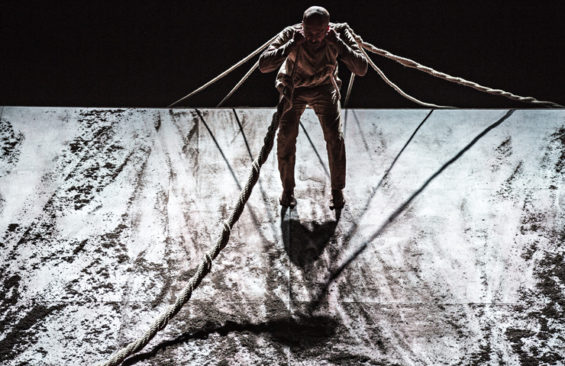Stranger in a Strange Land: Akram Khan and Xenos


Photo by Jean Louis Fernandez
Akram Khan doesn’t just perform his dances; he lives them. In Xenos, which played to a packed audience on February 21 at the Williams College ’62 Center for the Arts, he isn’t just a formidable dancer, but also a skilled actor adept at storytelling through explosive movement, small gestures, and poignant moments of stillness.
The show, presented in collaboration with Jacob’s Pillow, marks a stop on Khan’s farewell tour as a solo dancer—at least in such extensive, immersive works; at 44, the British artist (of Bangladeshi descent) is shifting his focus to choreography and production.
And what a way to go out. Xenos, like many of Khan’s creations, centers around big themes told through smaller moments in time: in this case, the ravages of war and our loss of humanity, as seen through the lens of an Indian soldier forced into combat under the British flag in World War I.
Perhaps even more than this artistic statement, Xenos is a showcase for Khan’s inimitable style. From the moment he stumbles onto the stage, a prisoner deposited in an unknown place, he draws from both modern dance and classical Indian dance traditions, especially Kathak. The result—a blend of more familiar Western movement with rhythmic stomping, traveling steps, sharp accents, the incorporation of mudras (small hand gestures), and plenty of chukras (impossibly rapid turns on nearly flat feet)—is dynamic, arresting, sometimes dizzying, and always beautiful.
At times it’s also punishing, as Khan tosses himself onto breakaway props, rolls full-length down a hill of battle, and is dragged or suspended by ropes. As he, a reluctant participant in someone else’s fight, gets deeper into the war, his movement becomes more primal, a man scrabbling for anything that resembles life as he knows it. It’s a fascinating examination of the push and pull between wanting to survive and wanting to retain our dignity and humanity, and failing to do either particularly well.
The set and score, by Mirella Weingarten and Vincenzo Lamagna, respectively, are richly atmospheric and brilliantly support Khan’s storytelling. The staging is sparse, with a handful of props and a rope-covered slope at the back that turns into a combat site; at one point, it even takes on an otherworldly, Mars-like feel as Khan’s isolation grows. The sound shifts between classical Indian drumming and vocals, dissonant modern strings and woodwinds, and snippets of spoken word that heighten the feeling of desperation and longing, especially when a disembodied voice begins to recite the names of lost Indian soldiers.
As the show comes to a close, with a lone searchlight shining over a storm of pinecones that rain down the hill past Khan, the audience is not left with a feeling of hope per se, but a wish for our protagonist—and, by extension, all of us—to persist, to connect, to free ourselves from pain and struggle.
This review first appeared in the Greylock Glass.